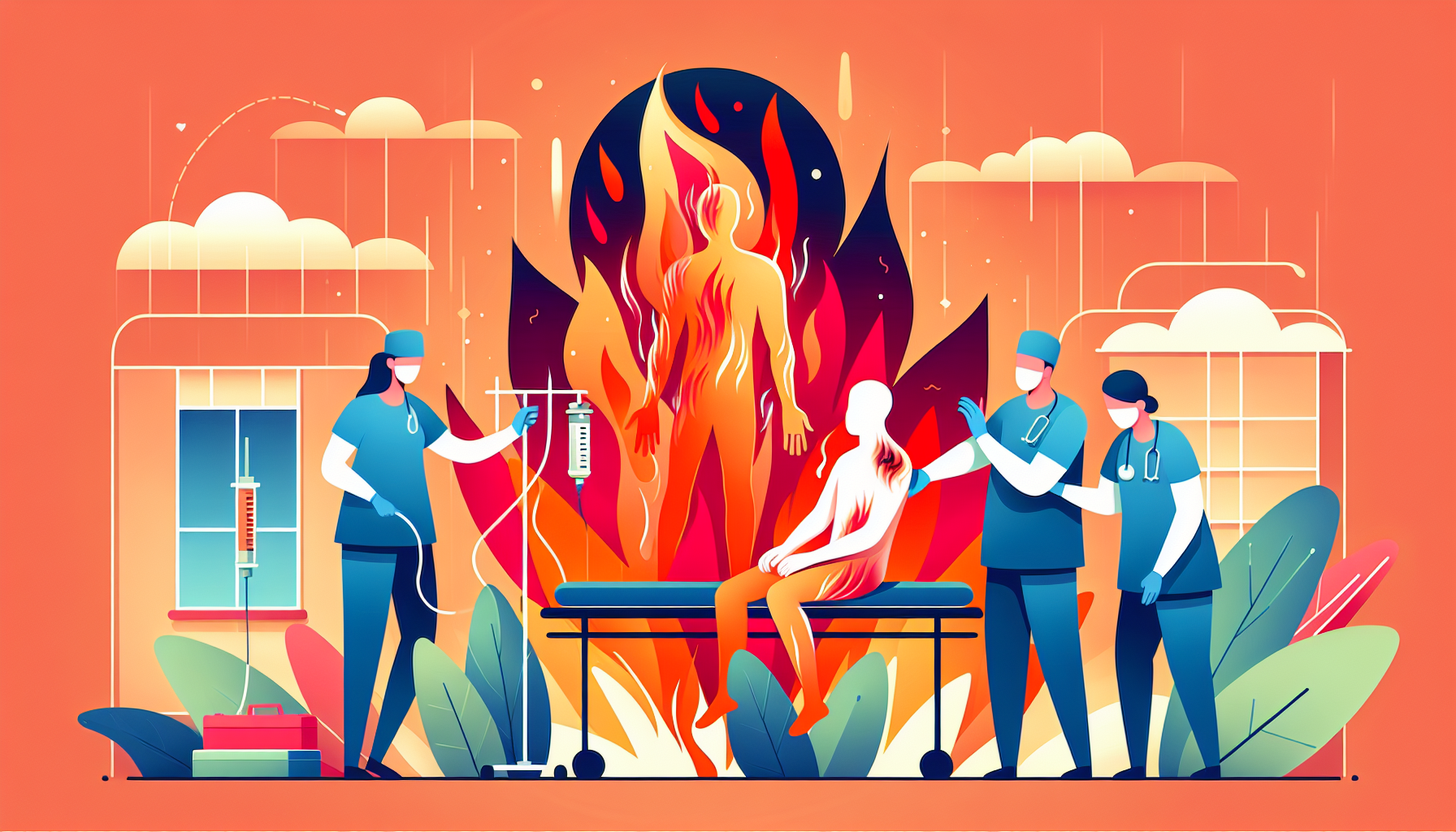7 Common and Serious Side Effects of Acetaminophen
Key TakeawaysAcetaminophen is effective but can cause side effects, some serious.Common side effects include nausea and rash, while serious ones involve liver damage.Knowing [...]
Read More
Medically reviewed by William Wadzinski | MD, Uniformed Services University of the Health Sciences on July 21st, 2023.
Burn injuries can be frightening and painful, but knowing the proper first aid steps can help you manage the situation effectively. This guide will walk you through the essential steps for treating first, second, and third-degree burns.
In some cases, burn injuries require immediate medical attention. Call 911 if:
The burn penetrates all layers of the skin
The skin appears leathery or charred, with white, brown, or black patches
The person is an infant or a senior
Severe burns of certain areas such as the face, hands, and genitals will require emergency medical evaluation
Stop the Burning Process: Put out the fire or stop the person's contact with hot liquid, steam, or other material. If clothing is on fire, help the person "stop, drop, and roll" to smother the flames. Remove smoldering material and hot or burned clothing. If clothing sticks to the skin, cut or tear around it.
Remove Constrictive Clothing: Take off jewelry, belts, and tight clothing immediately, as burns can swell quickly.
Cool the Burn: Hold the burned skin under cool (not cold) running water or immerse in cool water until the pain subsides. Use compresses if running water isn't available.
Protect the Burn: Cover the burn with a sterile, non-adhesive bandage or clean cloth. Avoid applying butter, oil, lotions, or creams, especially if they contain fragrance. Apply a petroleum-based ointment two to three times per day.
Treat Pain: Give over-the-counter pain relievers such as acetaminophen, ibuprofen, or naproxen.
When to See a Doctor: Seek medical help if you notice signs of infection (increased pain, redness, swelling, fever, or oozing), the person needs a tetanus or booster shot, the burn blister is larger than two inches or oozes, redness and pain last more than a few hours, the pain worsens, or the hands, feet, face, or genitals are burned.
Follow Up: The doctor will examine the burn and may prescribe antibiotics and pain medication.

Cool the Burn: Immerse the burn in cool water for 10 to 15 minutes. Use compresses if running water isn't available. Don't apply ice, as it can lower body temperature and cause further pain and damage. Avoid breaking blisters or applying butter or ointments, which can lead to infection.
Protect the Burn: Cover the burn loosely with a sterile, nonstick bandage and secure it in place with gauze or tape.
Prevent Shock: Unless the person has a head, neck, or leg injury, or it would cause discomfort, lay the person flat, elevate their feet about 12 inches, and elevate the burn area above heart level, if possible. Cover the person with a coat or blanket.
See a Doctor: The doctor can assess burn severity, prescribe antibiotics and pain medications, and administer a tetanus shot, if needed.
Call 911
Protect the Burn Area: Cover the burn loosely with a sterile, nonstick bandage or, for large areas, a sheet or other material that won't leave lint in the wound. Separate burned toes and fingers with dry, sterile dressings. Do not soak the burn in water or apply ointments or butter, as this can cause infection.
Prevent Shock: Unless the person has a head, neck, or leg injury, or it would cause discomfort, lay the person flat, elevate their feet about 12 inches, and elevate the burn area above heart level, if possible. Cover the person with a coat or blanket. For an airway burn, do not place a pillow under the person's head when lying down, as this can close the airway. Have a person with a facial burn sit up. Check pulse and breathing to monitor for shock until emergency help arrives.
See a Doctor: Doctors will provide oxygen and fluid, if needed, and treat the burn.
Remember, prevention is key when it comes to burn injuries. Always exercise caution when handling hot objects, liquids, or chemicals, and keep a well-stocked first aid kit on hand. If you're unsure about the severity of a burn or how to treat it, don't hesitate to seek professional medical advice from a healthcare provider or burn specialist.
Key TakeawaysAcetaminophen is effective but can cause side effects, some serious.Common side effects include nausea and rash, while serious ones involve liver damage.Knowing [...]
Read MoreKey takeawaysWeight gain is a common concern for those considering intrauterine devices (IUDs) as birth control.Different types of IUDs may affect the body differently, but [...]
Read MoreKey takeawaysFacial eczema requires gentle care tailored to sensitive skin to reduce irritation and flare-ups.Identifying triggers and using appropriate skincare products are [...]
Read More